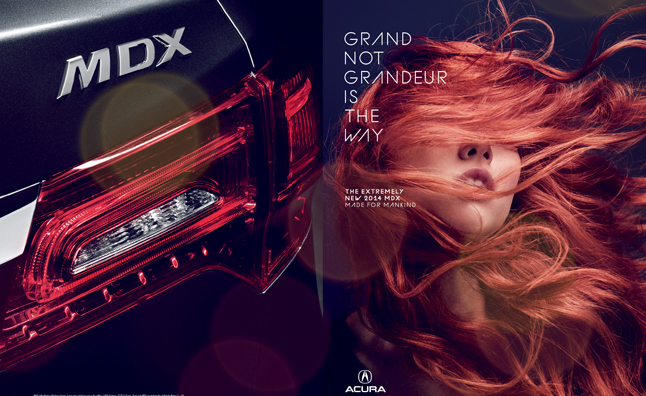
Acura recently launched its largest and most seamless campaign in the car manufacturer’s 27-year history. The campaign for the new 2014 MDX revolves around the single idea, “Made for Mankind” – a simple message that is in one breath lofty and ethereal, yet at the same time refreshingly human.
This message is elegantly brought to life through a series of creative executions where the car itself often plays a supporting role to visuals and language focused more on the determined spirit of mankind and pushing forward as a people. In fact, the car is actually only visible for 18 seconds of the 60-second national television commercial, which is primarily filled with artistic visuals of human strength and exploration.
This type of approach is way out of the comfort zone of most mainstream car manufacturers – and even those currently dominating the luxury market. It is a dramatic approach, but one that Acura is confident will appeal to the target demographic they refer to as “Doers”. Gary Robinson, manager of Acura’s national advertising and brand, describes this audience as wealthy, but non-ostentatious, people who want to make a difference in the world via their work, affluent consumers with a very specific mindset. This group includes Facebook founder Mark Zuckerberg, Google co-founder Sergey Brin, and statistics whiz and author Nate Silver – all Acura owners.
In order to connect with this audience, Acura abandoned the usual selfish rhetoric found in most luxury car commercials (“you deserve”, “treat yourself to the ultimate”, etc.) – and instead went with more of a focus on human advancement and betterment. This may seem risky, but it’s actually rather brilliant when you consider the philanthropic tendencies of today’s affluent and ultra-affluent consumers.
Robinson says they realized that Acura owners always seemed to be the smartest people in the room, but not necessarily the flashiest or most sophisticated. This is a reality that the brand decided to embrace and which should resonate with a growing section of affluent consumers who are more concerned with making the smart decision rather than choosing what is deemed the most “affluent” option.
Here’s how the campaign plays out in print and outdoor: